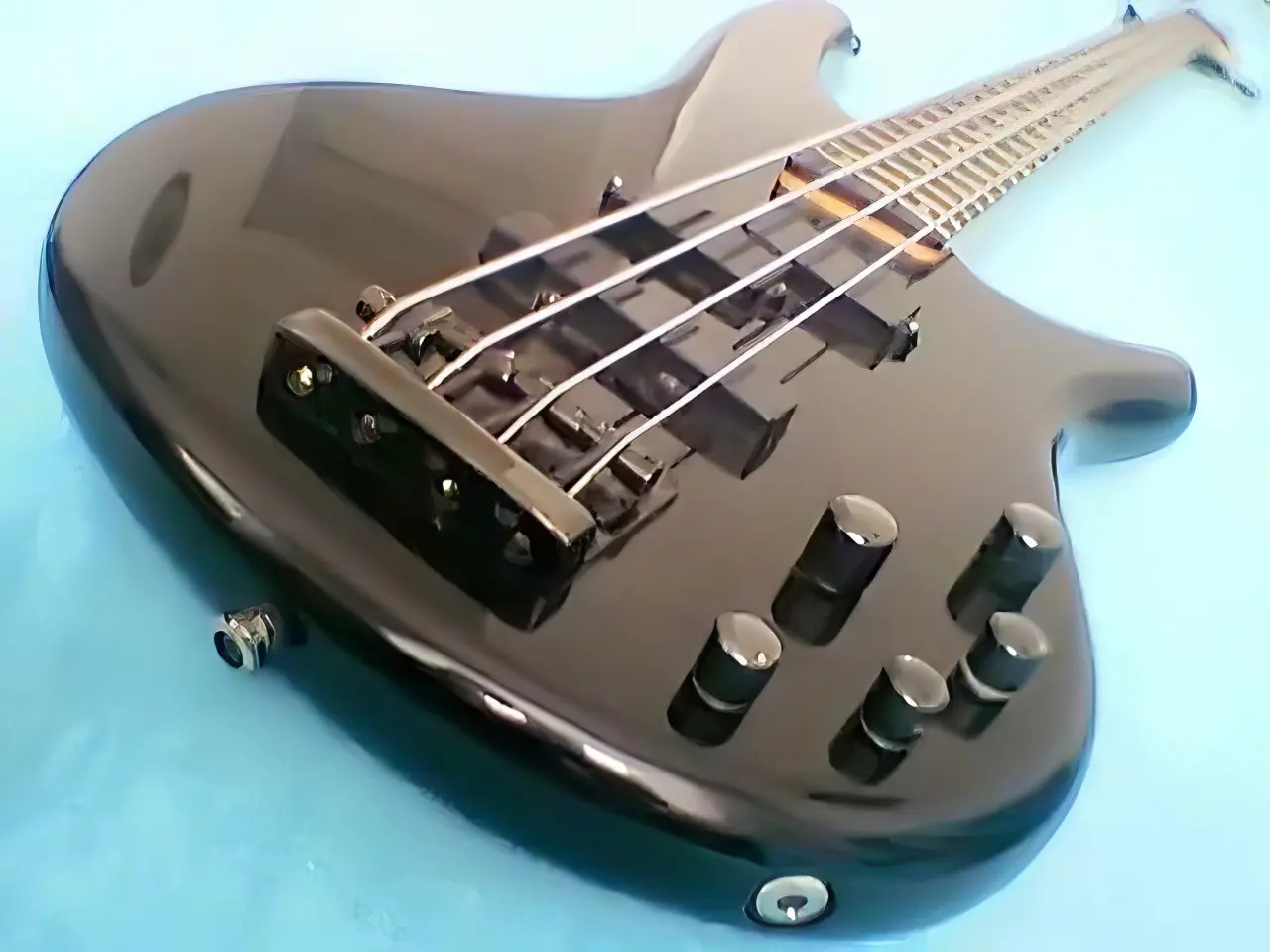
Mój wspaniały Ibanez SR 400

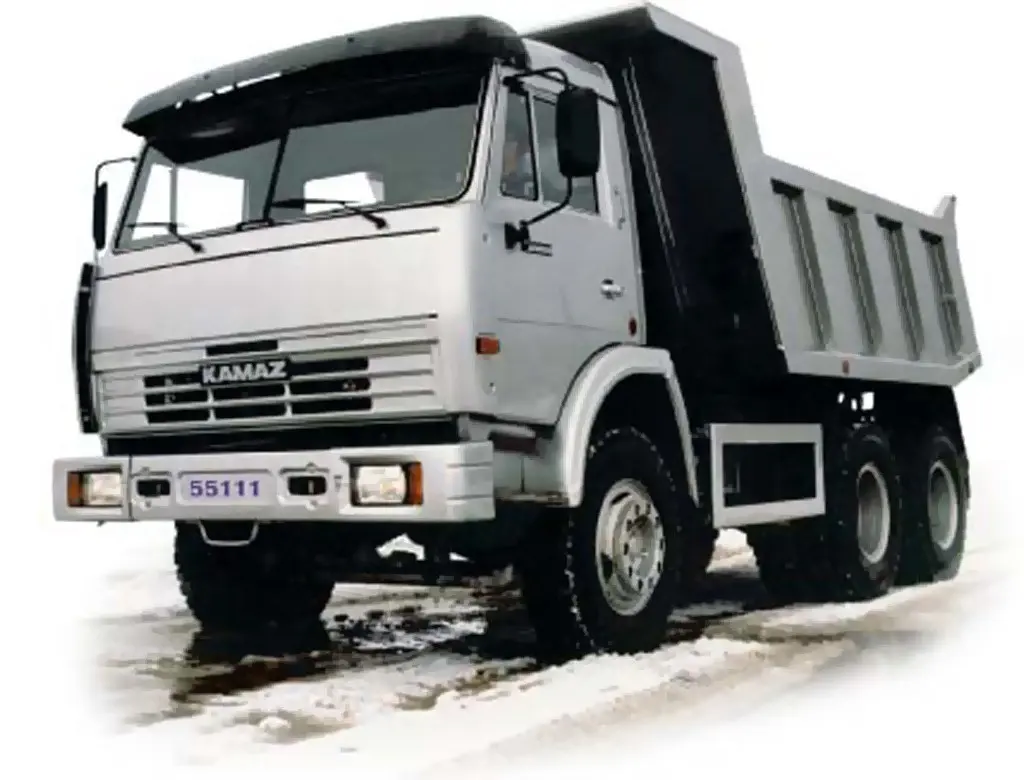
Mój piękny ibanez. Zdjęcie zrobiłem komórką, bardzo starą, acz zacną
nokią 7650 🙂 Tło to przescieradło na łóżku. Mimo, że masakrycznie
słaba jakość – to jakoś strasznie lubię tę fotkę – ma w sobie coś 🙂
Nie nawidzę zdjęć z komórek, ale z tym jest inaczej… Fotka zrobiona z 4
lata temu, od tej pory mam to zdjęcie w awatarach na wszystkich forach na
jakich jestem zarejestrowany, w profilach na różnych serwisach, na
wyświetlaczu telefonu itp 🙂
Jeśli ktoś ma jakiekolwiek pytania odnośnie tego basu to proszę śmiało
pytać w temacie – na pewno odpowiem na każde korzystając z wszelkich moich
doświadczeń i doznań oraz całej mej wiedzy.
Pzdr.
36 komentarzy
Możliwość komentowania została wyłączona.


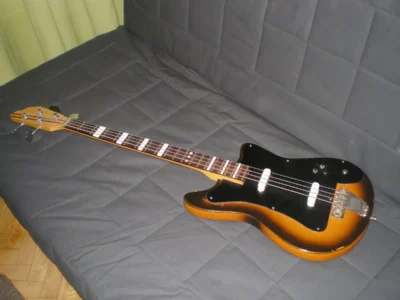
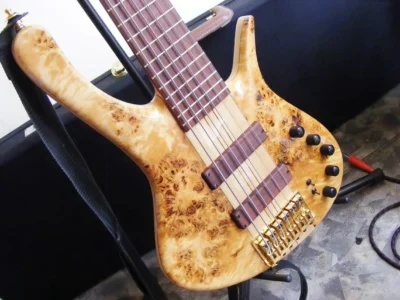


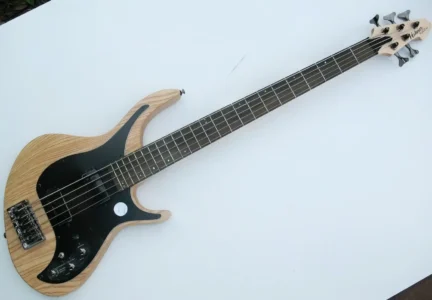

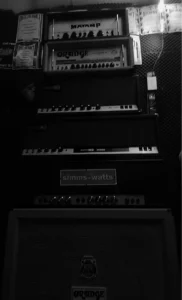
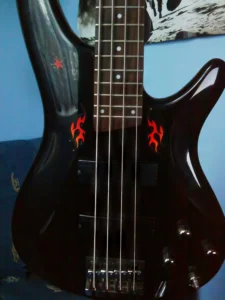




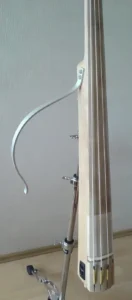
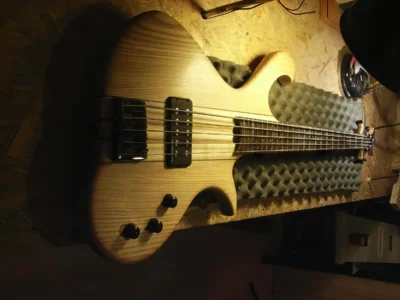
jest super!!… ja mam gsr-a bo na sr-a mi kasy brakoło:(…może kiedyś:)
ogolnie uwazam ze ibanezy to najladniejsze gitary basowe:) pozdrawiam!
Piękny, piękny
Wypolerowałeś go do zdjęcia ???
Z chęcią poujeżdzałbym go
[quote=Rafał133]jest super!!… ja mam gsr-a bo na sr-a mi kasy
brakoło:(…może kiedyś:)
ogolnie uwazam ze ibanezy to najladniejsze gitary basowe:) pozdrawiam!
Też tak uważam 🙂 No może Fodera robi ciut ładniejsze basy 😉
Zbieraj na SR – nie ma porównania do GSR serio. Gsr to basy dedykowane do
nauki, najniższe modele pokroju najtańszych Cortów i Yamaszek. Z serią SR
nie ma porównania – inna bajka, inny świat!
Wiem, ze piękny! Tak – wypolerowałem do zdjęcia specjalnie – pamiętam.
Wpadaj do Zgorzelca – dam Ci poujeżdżać, pomacać, wypieścić, a nawet i
pograć na nim będziesz mógł jak ładnie poprosisz.
Pozdrawiam!! 🙂
=======================================================
zapraszam do posłuchania i komentowania moich basowych wypocin
—>
http://www.ibanezbass.mp3.wp.pl
Kurde pewnie , że chciałby wpaść spotykać się z Tobą , napić się piwa
i poujeżdzać Twoją basię…
Tylko ciut daleko mam do Zgorzelca 🙁
ja jednak uwazam ze najladniejsze sa B.C.Riche xP
Tez tak mowilem, ale gdy miałem 14 lat 😉
Teraz wole takie owalniejsze ksztaly, bardziej przyjazne, coś jak Mayo Prestige
i tego typu.
______________________________________________________________
The Gods Made Heavy Metal And They Saw That It Was Good!
They Cant Stop Us Letem Try, For Heavy Metal We Will Die!
a ja myślę ze Ibanez SR400 jest najpiekniejsza gitara na swiecie…… tym
bardziej ze sam taka mam:mryellow:
To mosiężny mostek?
Jeśli tak, to mam taki sam w swoim Ibanezie. Miło wiedzieć, że po 27 latach
firma nadal wykorzystuje dobre części 😀
wiem ze sr to inna bajka bo grałem i zbieram:)…ale niestety jeszcze combo
musialem kupić… to teraz łaczna wartosc mojego sprzętu wynosi tyle co
najtanszy sr:P
Mazdah, przeszukałem w c*uj internetu i nie znalazłem żadnego info z czego
jest mostek… Podejrzewam, że to zwykła porządna stal i tyle. Siodełko
plastik – jeśli o to chodzi. Wątpię w to aby Ibanez po 27 latach zacząl
wykorzystywać złe części. W basówkach tej firmy, które kosztują od 1500zł wzwyż – naprawdę nie ma się do czego przyjebać!
A tak w ogóle to chyba nie spotkałem się z mosiężnym mostkiem w żadnym
basie jeszcze :O Może nigdy na to nie zwróciłem uwagi, ale sam kolor mostka
by już mnie na 100% zaciekawił, więc raczej się nie spotkałem i mało o
tym słyszałem, żeby mostki z mosiądzu były… Siodełka owszem…
Spotkałem się jedynie z mosiężnymi kowadełkami w mostku, na których
opierają się struny.
Wogóle zaintrygowałeś mnie tym pytaniem! Muszę lepiej poszukać…
Pozdrawiam!
=======================================================
zapraszam do posłuchania i komentowania moich basowych wypocin
—>
http://www.ibanezbass.mp3.wp.pl
Daleko szukać nie musisz 😉
Spoko Mazdah! Nigdy nie zdawałem sobie z tego sprawy, albo nie zwróciłem
uwagi… Ale rzeczywiście – od razu wygląda na mosiądz! :O
Spox sprawa. Sprzedałeś już ten basik? Nie, żebym chciał kupić, bo precle
mnie nie interesują(chyba, że PJ) – z ciekawości pytam…
ps. zmniejsz fotke tak by była szeroka na 640, bo jak dajesz 800 to już
rozjebuje się układ strony w większości przeglądarek…
Pozdrawiam!!
Nie wiem z jaką rozdzielczością na pokładzie działasz, ale w 1024×768 na
operze wszystko jest OK, a to jest dość niska rozdzielczość jak na obecne
standardy …
Bas został na forum – zanabył go Shpila, którego to będę pilnował, by mi
Ibanez zwrócił za lat kilak droga sprzedaży 😉
Odświeżę lekko temat – muszę jak najszybciej zmienic basię (wysłużony
Squier) i za niewielkie fundusze nabyc cosik lepsiejszego. Tu ukłonił się do
mnie znajomy i zaproponował, cobym zakupił od niego sr400.
Padła cena – 1400zł. i tu sprawa: osobiście wolałbym, żeby cena za tą
gitarę oscylowała bliżej tysiączka – upierac się przy swoim czy też
potulnie zapłacic?
Z tego co wiem, sprowadzic Ibanez (ten model) nowka z USA wyniosłoby mnie
podobnie albo i trochę mniej, tylko czasu szkoda…
Na basieńce lata się wyśmienicie i generalnie byłbym z niej zadowolony (jak
narazie:P).
Co polecacie mi czynic, bo i tak w tej cenie nie znajdę chyba nic
godniejszego…
———————————————————————————————-
Mysticos:
– Po pierwsze – Sr400 nowego nie sprowadzisz, bo ich już nie robią.
– Po drugie – nie ma jednego sr 400, tylko jest ich OSIEM różnych modeli – w
zależności od lat, w których były produkowane. Generalnie im starszy SR400
tym lepszy.
– Po trzecie – cena – ta zależy od stanu instrumentu – jeśli basik jest w

świetnym stanie i jest to dość stary model to za te 1,4kzł warto. Jeśli to
ten sam model, który ja posiadam(a mój wyprodukowany w listopadzie 1998 roku,
i jest trzysta trzecim sr 400 wyprodukowanym w tym miesiącu) to warto
Jeżeli to inny sr400 to też warto 🙂
– Po czwarte – zawsze… ZAWSZE warto się potargować 😉
Tutaj masz wszystkie ibanezy sr 400:
http://www.ibanezregister.com/Gallery/basses/sr/gal-sr400.htm
A tutaj masz napisane jak odczytywać numerki seryjne:
http://www.ibanezrules.com/catalogs/reference/dating.htm
Może dla potomnych spirace tu ten tekst, jakby kiedyś zniknąl z tamtąd:
pozdrawiam.
ps. Jak go kupisz to się pochwal!!
cholera to mnie gościu w błąd lekko wprowadził z tą nowką z USA,
widocznie się tak kulawo dogadalismy;)
posłałem gońca z zapytaniem o seryjny nr. i wieczorkiem będzie wszystko
podane;)
pięknie dzięki za odp.
pozdrawiam
sierpień 98, 4978 wyprodukowany o ile dobrze wyczytałem… cóż, zbieram
kaske 😉
———————————————————————————————-
Ale posty to się edytuje, nie.
za brak edycji bardzo przepraszam, brakuje mi jednej opcji, mianowicie: kasuj
posta!!!(człek się czasem zapędzi)… oczywista dziękuję za poprawkę, bo
nie wiedziałem jak rozwiązac zaistniałą sprawę…
tak czy owak przesiadłwszy się na sr400 i nareszcie do końca pojmuję
kwintesencję pytania w studiu:
naprawdę chcesz nagrywac na tym basie???(oczywiście pytanie dotyczy
Squier-a)
dziękuję za uwagę i możliwośc podzielenia się emocjami swemi
cholera, znowu nie edytowałem…
———————————————————————————————-
mi się ten Ibanez nie podoba, wyglada jak takie tanie gitary:P nie wiem czemu
po prostu kojarzy mi się ze SkyWayami staggami itp
Pozwolę sobie odświeżyć wątek tego ibka. Zawsze wydawało mi się że
SR400 ma układ pickupów PJ, a tymczasem tu znalazłem coś takiego
allegro.pl/item445651545_tylko_u_nas_aktywny_bass_ibanez_sr400_gratisy.html
Co to za model tak na prawdę??
GRUNT TO PODSTAWA
Gajowy – nie będę się powtarzał… Poprostu przeczytaj dokładnie ten
temat. Jakbyś to zrobił to byś nie zadał tego pytania.
Tak naprawę to jest SR400.
A przypadkiem w Yamaha rbx6jm nie jest mosiężny? tak coś mi świta
Masz rację. Jest. SOLID BRASS, a mosiądz to właśnie brass po angielsku.
Pzdr.
Świetna ta fota. 🙂
Hehe, na tyle świetna i na tyle mi się podoba, że aż sobie to wydrukowałem
i wisi u mnie na meblach na honorowym miejscu 🙂 Oto i dowód:
http://www.images49.fotosik.pl/50/6fd7aa0d90e3e01a.jpghttp://www.images31.fotosik.pl/439/7a1d296abce4377d.jpg:mryellow:
pozdrawiam. 🙂
Masz te meble obklejone, jak u jakiejś 12-latki, tylko zamiast słodziutkich i
przytojnych członków boysbandów masz basówki. ;d
Zboczeniec!!!
Sprzedałem zacnego Squiera, ponieważ miałem ku temu powodów kilka.
Wymienię poniżej te ważniejsze:
– mam i miałem kilka innych basów.
– mam i miałem kilka innych, lepszych basów.
– mam yamahę, na której pickup precision brzmi lepiej niż w tym Squierze, a
do tego jest to po dwakroć wygodniejszy basik od Squiera.
– mam ibaneza, na którym ogólnie o wiele lepiej mi się gra.
– na Ibanez grałem na dłuuuugo przed kupieniem Squiera, a i długo po
sprzedaniu Squiera będę grał na owym Ibanez – taką mam chęć i tak się
stanie 🙂
– na tym ibku sam pickup p brzmi równierz zacnie i nie powiedział bym, że
gorzej niż w Squierze.
– nie było gdzie oprzeć palucha w Squierze (zwykle opieram go na pickupie j
przy mostku).
– potrzebowałem kasy, a nie miałem wówczas pracy.
– Squier był i jest w cenie.
– zdecydowanie wolę układ pj, niż samo p.
… teraz rozumiesz mnie chociaż troszkę?
pozdrawiam. 🙂
Sr są świetne. Sam mam Sr600 którego już nie produkują, jakieś 4 lata temu
dałem za używany 2500zł z kluczami gotoh i EMG Pj. Ile dałeś za swój?
„gbanez”-masz na swoim egzemplarzu pięć potencjometrów. Wiesz coś na temat
SR400 z trzema potencjometrami? Jakieś różnice poza tym, że mniejsza
ilość pokręteł na wiośle?:)
Zastanawiam się też nad OLP MM2 do rockowego granka.
Z tego co mi się wydaje, to SR400 nigdy nie był produkowany w wersji z trzema
pokrętłami
…a jednak…Made in korea. Dlatego pytam.
może to nie jest w ogóle SR400
Aj, pomyliłem się. To Fender Warwick Kamaz SR400. Jak piszę, że SR400
Ibanez w takiej wersji to tak piszę. Niech ktoś napisze jeśli coś
sensownego wie o takim modelu.
Poszperałem trochę i znalazłem coś o tym. Gitary były produkowane od 1993
do 1995
Korpus: klon amerykański
Gryf: klon 3 części (chyba)
Podstrunnica: palisander
Przystawki: IBZ DXP, IBZ DXJ
Fender Warwick Kamaz 😀 co to za ulepek?
fender:
http://www.cheap-guitar-s.com/wp-content/uploads/2011/06/fender-bass.jpgwarwick:
kamaz:
O właśnie, to, to. Przystawki DXP i DXJ sa w tym wiośle. Nie ma żadnych
recenzji tego sprzętu. Ktoś ma jakieś opinie na ten temat?
Powiem szczerze, że zamiar był zgoła inny i brak logicznego ładu/składu,
ale kombinacja w/w trzech egzemplarzy jednak ma coś w sobie:)